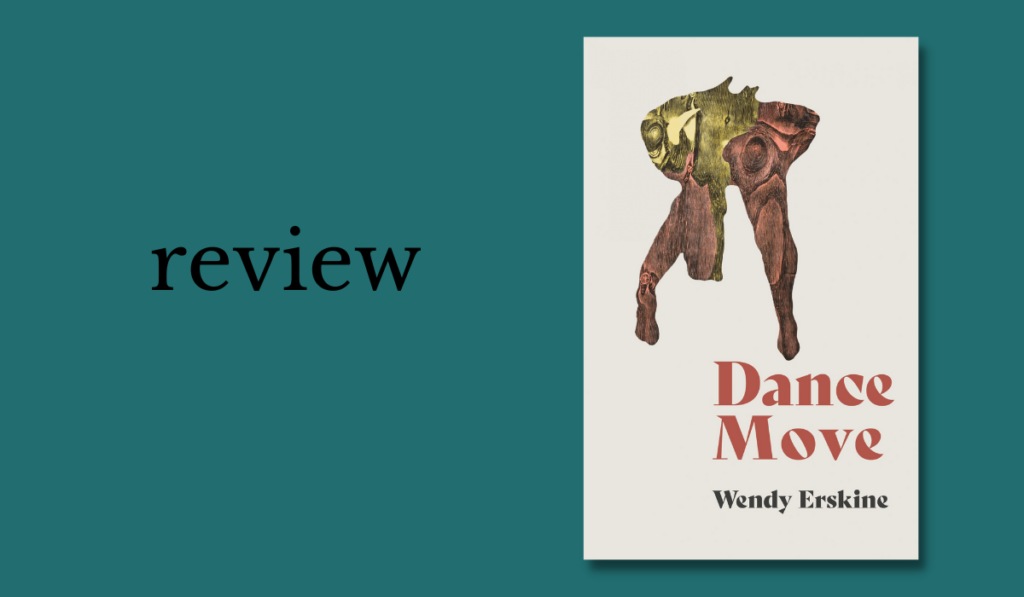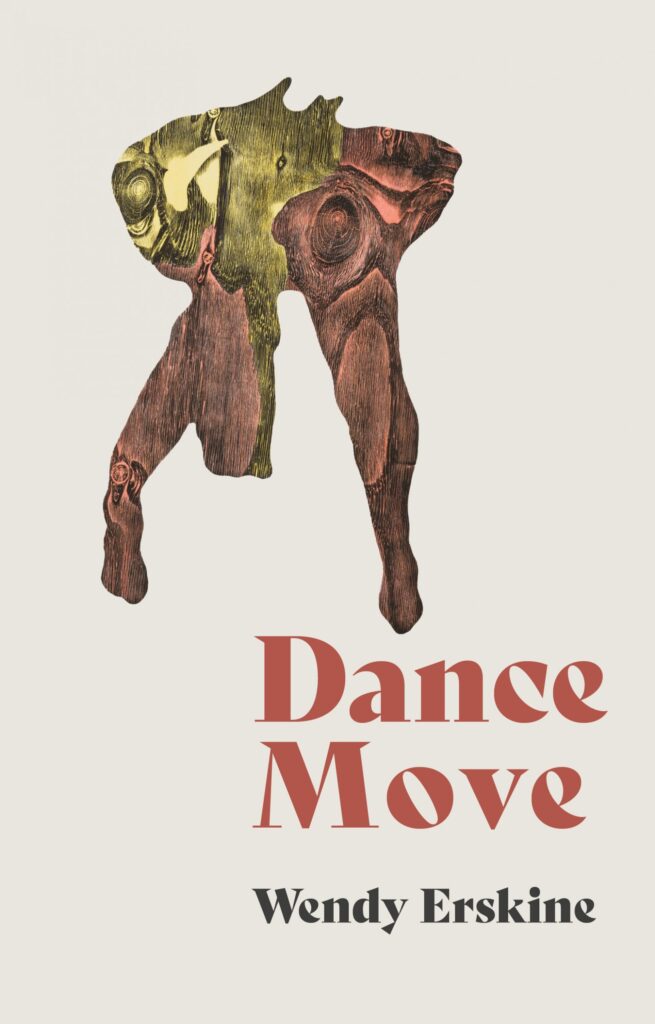
Dance Move|Wendy Erskine|Stinging Fly Press (Ireland) / Picador (UK)|ISBN: 9781906539931|PB €15.00 HB: €24.00
“Humour is everywhere in Dance Move, usually deadpan, operating just as it does in life, to leaven the mundane and the dark, to curtail any tendency towards sentimentality.”
—Stephen Reid on Dance Move by Wendy Erskine, a collection charged with possibility
by Stephen Reid
The short story by its nature values economy of language, of pacing, and so there’s a kind of effortless confidence in how Wendy Erskine wields the banal in her stories.
She can at times languorously dwell for almost a page at a time on the deeply mundane, almost meditative qualities of labour, or on some mild interaction between characters, dancing on pretence, all the while allowing the weight of a line, a memory, a revelation, to charge the whole story with energy.
Spiritual sucessor
Dance Move is very much a spiritual successor to Erskine’s highly lauded 2018 debut Sweet Home, with many of the same preoccupations: memory, labour, class, the observation of others’ lives, pleasure and its interplay with discomfort, desire, place, and the flux between the banal, the poignant and the terrifying.
‘I wouldn’t say I’m trying to do anything fundamentally different to what I did in Sweet Home’, Erskine noted in a recent interview, ‘I haven’t adopted a new style, and the subject matter isn’t anything particularly radical. But at the same time, I hope I’ve got better as a writer.’
The continuation here from Sweet Home is a relatively clean line, yet the honing of craft is evident everywhere in Dance Move.
A truly great artist creates not only a thing of beauty, complexity and meaning—but often the illusion that the process of creation was effortless. Dance Move wears this effortlessness, yet each story’s construction is delicately purposeful and deliberate.

Cover Design: Rory Jeffers
Fault lines of our lives
A few of the pieces here – ‘Mathematics’, ‘Golem’, ‘Cell’, ‘Dance Move’ – rank among the best short stories I’ve encountered in the last number of years, and are a new high water mark in Erskine’s career.
Many others are exceptional too, with ‘Mrs Dallesandro’, ‘His Mother’ and ‘Nostalgie’ all perfect encapsulations of the author’s style.
‘Bildungsroman’ follows a young man’s chance friendship with an older woman, who harbours a secret in her attic, an emblematic symbol of the North’s violent past. The pay-off at the end of the story works to a degree, but it felt as though the metaphor of a violent history being inherited by the next generation was a little on the nose, compared to the more subtle turns of the other stories.
‘Nostalgie’ treats the North’s history of violence with a more nuanced premise, and wonderfully explores many British people’s obliviousness towards, and to a degree their complicity in, the violence and commemoration of violence in the North.
Erskine is excellent when operating on the fault lines of our lives – these stories often find their stride when exploring the interplay between classes, ages, the past and the present, and when they apply pressure to easy assumptions we have about ourselves, or those around us.
Dance Move
The collection draws its title from the story ‘Dance Move’, which follows Kate as she watches, horrified, as her young daughter hip-hop dances in the back garden with her friend, humping the decking, gyrating and generally being young and stupid. The careful unveiling of the source of Kate’s insecurities and anxieties occupies most of the story, executed in a masterful development of character.
Kate can be a somewhat stifling narrator, an exquisite wet blanket, her uptightness having calcified into a kind of reactionary dismissal of frivolity – and yet, in Erskine’s hands, Kate also harbours her own carefully concealed desires for a kind of unarticulated fulfilment or release, contained within the idea of dance.
In her search for dance classes for her daughter online (to divert her away from the floor-humping madness of hip-hop), Kate comes across videos of women pole dancing. She watches these videos over and over with a kind of compulsion, a kind of searching, allowing herself to appreciate the physical prowess and capability of these women while ‘setting aside the sleazy aspect’.
Humour is everywhere in Dance Move, usually deadpan, operating just as it does in life, to leaven the mundane and the dark, to curtail any tendency towards sentimentality.
Kate’s anxiety about harm befalling her daughter stems, at least to some degree, from a terrifying encounter she had with a camp instructor while on holidays when she was fourteen, which imposes itself on her memory for the rest of her life – a recurring pattern that features in many of the stories here.
It seems that what truly worries Kate about her daughter’s developing sense of sexual awareness is not only the external dangers of the world, but also the pyrrhic sense of desire she once experienced at that age, the desire to encounter danger, tangled as it was with sexual awakening.
Desire
It’s this capacity to elaborate and deepen our understanding of what may at first appear to seem like straightforward emotions, the ability to confront less than desirable aspects of our personalities (that are often as powerful and influential as our better angels) that marks Erskine’s writing apart from so many others.
As ‘Dance Move’ concludes, Kate finds herself paralysed by the desire to move, the desire to dance, as though if only she could give herself over to the music it would satiate some unfulfilled need she has carried all these years.
The longing, the desire to live – even briefly – in some freer, lighter, more fulfilled way, carries through the entire collection.
The dance move of the title feels like a signifier for that desire, harboured in every life, for some greater understanding from the world, some fulfilment of the self, some shaking off of the past, that so often remains achingly close yet achingly out of reach.
Erskine’s characters all glow from within with humane feelings of desire, longing, and yet so many of them remain standing at the edge of the dancefloor, willing themselves into motion, yet unable to move.
In most writers’ hands, this inertia at the story’s close might give off a sense of hopelessness, yet Erskine has a peculiar ability to leave the air charged at the end of most stories with a static crackle of possibility.

Stephen Reid works as an Assistant Editor with New Island Books and as a Sales Agent with Brookside Publishing Services












